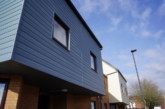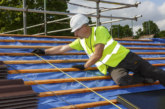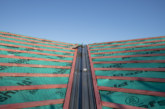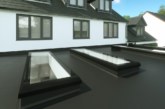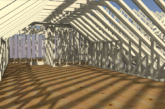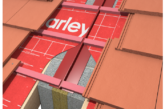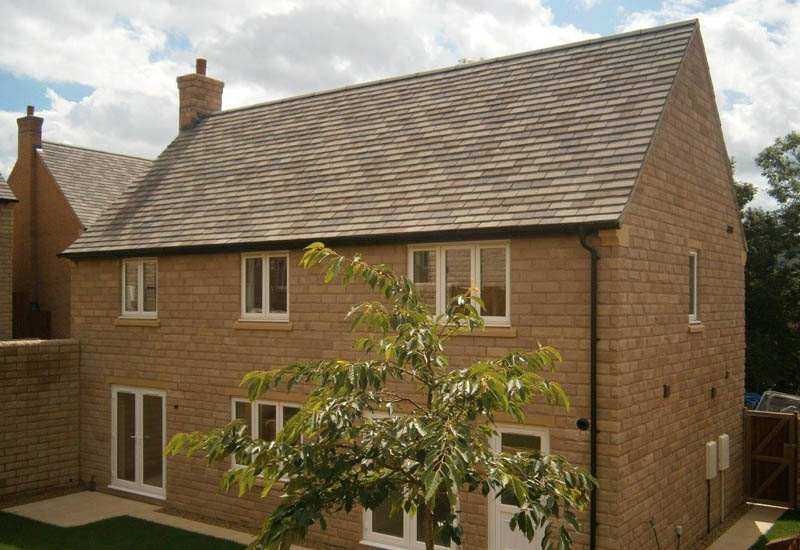
John Lambert, general manager at Forticrete, explains how the latest developments in concrete roof tile technology provide a practical, cost-effective and aesthetically pleasing solution.
In order to meet local planning regulations in areas of natural beauty such as national parks, conservation areas and World Heritage Sites, new homes need to look attractive, blend with the surrounding area and help shape desirable communities where people want to live. As one of the most prominent features on a property, the choice of roofing material will have a huge impact on the overall aesthetics and feel of a building.
A popular choice of roofing tile for the UK built environment is natural slate, however even though it is a durable building material, it is rarely used today because of its expense to quarry, cut and transport. In addition, with so many different size, finish, colour and regional variations of roof tile available, it can be challenging to select the right product for the right job to ensure that a house is built or refurbished to fit in with the local vernacular.
So when it comes to specifying products for new build projects, building product manufacturers in particular, have an important role to play in terms of providing guidance and support to builders and clients.
The alternative
To provide a solution, many manufacturers now offer concrete roof tiles which offer virtually the same architectural properties as natural stone or slate. These specialist tiles mellow with age and can be laid in in broken bond, random widths or diminishing courses for an authentic traditional look.
Leading ranges come in a selection of up to ten subtle and natural colours, all carefully balanced to suit regional preferences. As with natural stone, the individual colouring of these tiles vary slightly from slate-to-slate, recreating that traditional appearance, hard to achieve within tight budgets.
Twilight finish
Housebuilder, MacBryde Homes, had to take local planning requirements into consideration when building its new development, Belvedere Park, situated in the highly sought-after conservation area of Neston.
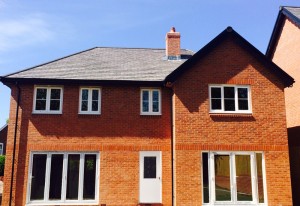
As most of the buildings in the surrounding area of the development featured natural stone with stone slate roofs, the local planning authority had specific planning requirements that needed to be met to ensure that any materials specified would blend seamlessly with the surrounding conservation area.
After a number of alternative products failed to meet the requirements, Forticrete’s highly durable Hardrow Slates in Twilight were handpicked by MacBryde Homes to naturally compliment the large format slates used historically on existing Victorian and Edwardian properties in the conservation area and the development’s surrounding environment.
For Stuart Andrew, Design Manager at MacBryde Homes, Forticrete’s Hardrow Slate stood out head and shoulders above the rest as it offers the same architectural properties as natural slate, with an aesthetically pleasing finish at a fraction of the cost.
Blended solution
Another benefit was that it is also available in a range of natural stone shades which meant that MacBryde Homes were able to carefully select the perfect weathered blend which would be best suited to compliment the surrounding environment, which meant the planners were happy to approve its use.
Suitable for use in regions where a natural stone slate appearance is required, Forticrete’s Hardrow roof slates are manufactured with a slight variation in dimensional tolerance, adding to the product’s character when laid.
The sizes range from 457 x 305mm (min. pitch 25o), right up to the imposing 610 x 457mm which can be laid confidently at pitches as low as 17.5o, creating a bold appearance. The colour of Hardrow Slates will change with natural weathering, but the integrity of the tile carries a 30-year guarantee from date of supply.
Enhancing the Built Environment
With housebuilders and developers committed to creating sustainable, thriving communities when undertaking new build projects within sensitive and sometimes difficult planning sites, concrete roof tiles provide the versatility, performance and aesthetics to help them achieve just that.
Local planning offices don’t want properties which look unnatural and out of place within the local area, which means building product manufacturers need to understand the wants and needs of local authorities, and help housebuilders and developers to create buildings that look traditional and enhance the built environment.


